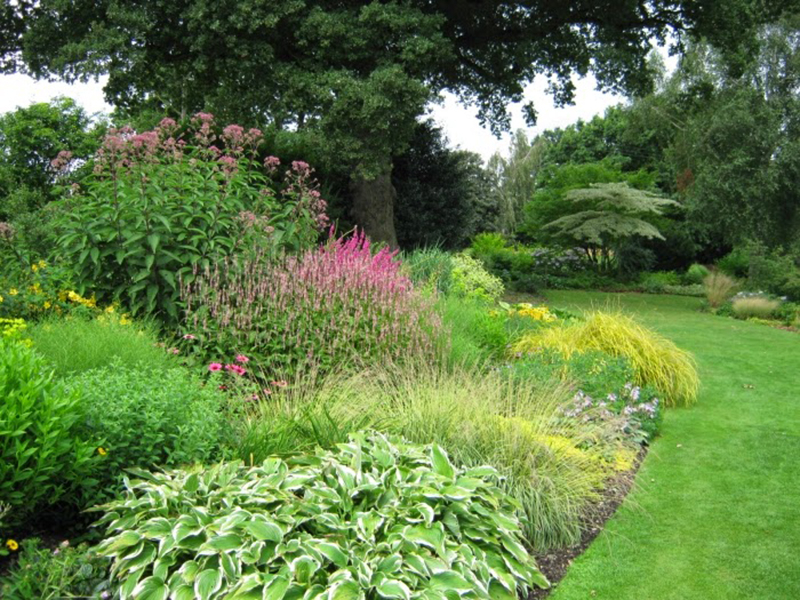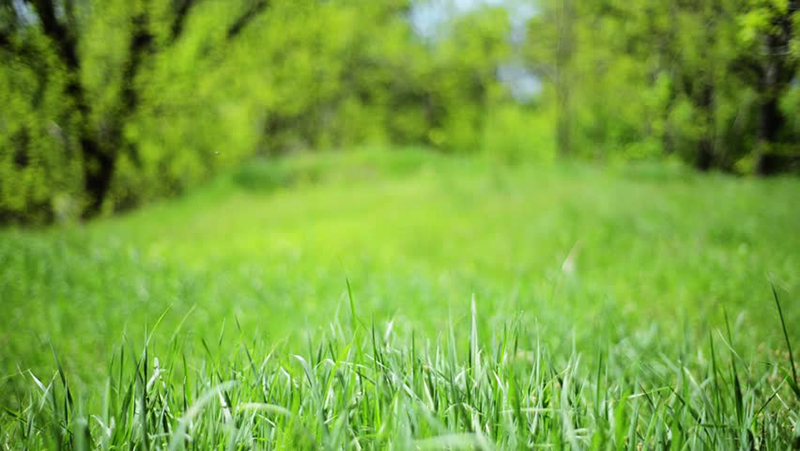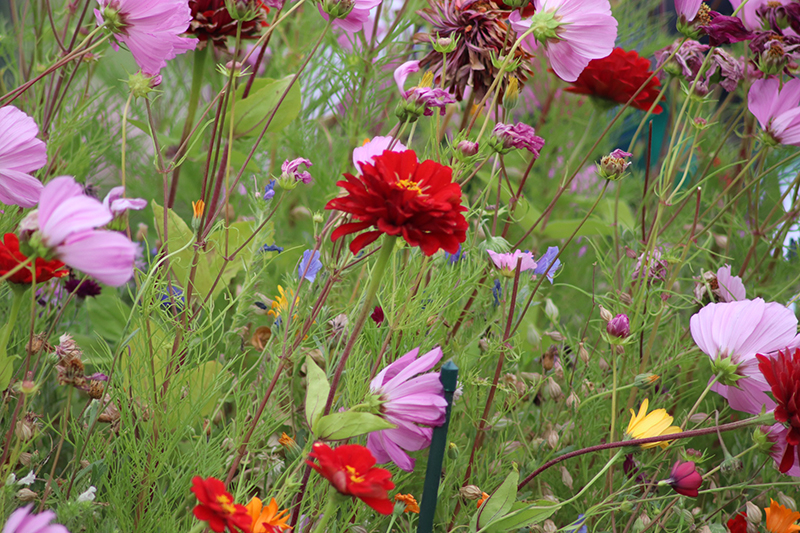Tips for a climate friendly garden
20/04/2020 - 16:05
Have you also noticed that every summer it becomes more difficult to keep your garden lush and green? Is that well-earned rest in the garden disturbed by temperatures that are too high? Is it too dry (and sometimes too wet)? Then it's time to take care of your garden: create a proper climate friendly or eco-friendly garden. Here are a few tips...
Consequences of the climate change in central Europe
All scientific models predict increasingly hotter and drier summers, along with wetter winters. On an annual basis:
- temperatures will rise, with peaks in summer. This will result, for example, in more heat waves.
- Precipitation will also rise (however paradoxical this may sound), but this will happen in a more concentrated form: shorter and heavier downpours, resulting in floods, for example.
This will also have an impact on your garden. It will be more difficult to allow certain plants to thrive because they are not suitable for growing in such conditions. In an enclosed environment with little greenery, temperatures can rise even higher: try and find refreshment in a south-facing garden, without shade and with a lot of pavement. And you will rarely see a billiard-green lawn when the water restrictions come into effect.
How do I turn my garden into a climate garden or nature garden?
| What is a climate friendly garden? |
|---|
|
A climate friendly garden or "nature garden" (or another synonym "eco-friendly garden") is first and foremost a place where it is wonderful to be in, a place where you can enjoy all year round despite / thanks to the variable weather conditions.
In an eco-friendly garden you aim to let nature take its course as much as possible: minimise your influence. Limit the inputs of fertiliser and watering to the bare essentials. Create a garden that can withstand extreme conditions and don't panic if they still seem - temporarily - too extreme: a natural garden will go into "defensive mode" in order to recover independently later on. Use local plants adapted to our climate and local growing conditions. A climate garden evolves along with the natural cycles: enjoy all these moments. |
Plant a tree
Besides the aesthetic aspect (who doesn’t enjoy a beautiful tree?) trees provide shade. A tree not only cools the garden, but also protects yourself and your loved ones from the harmful effects of too intense sunlight.

Moreover, a tree produces oxygen and absorbs carbon dioxide. Did you know that a healthy deciduous tree with a stem diameter of about 0.5 metres produces about 125 grams of oxygen per day? This is enough to allow 7 adult people to breathe every day.
A tree also helps to regulate the water balance in your garden. The crown can collect an enormous amount of water so that the impact of a downpour, for example, is minimised. This can make the difference between damp soil and soil that is too marshy.
Trees are ideal nesting places for birds, which provide the soundtrack in your nature garden.
If you have planted a fruit tree, then you can also enjoy all the goodies: nuts, apples, cherries, pears, ... you name it.
After all, a tree is also the ideal place for a swing, a hammock and for the creative person: a tree house.
| Our tips: choose native tree species that fit into your garden. Keep in mind that some trees grow slower than others and hat some can grow very large. Tree canopies come in all sizes: some provide more shade than others. Feel free to ask your local tree nursery for more information. |
|---|
| Give this tree optimal growth opportunities: use TerraCottem Arbor soil conditioner: |
| Mixing TerraCottem Arbor wih the soil when planting improves the soil structure: extra water is kept available for the tree roots and microbial life is stimulated. TerraCottem Arbor contains growth precursors that promote root growth: this ensures faster and better root development, so that the young tree can adapt more easily to its new location and there is less chance of the tree dying. More root growth means better aerial growth of the tree, that is nurtured through a “buffet” of balanced nutritive elements contained in TerraCottem Arbor. |
Play with the wind
In addition to shade, wind also provides cooling. A fresh breeze on a hot day is a relief. But wind that is too strong can ruin an otherwise pleasant day. Not to mention stormy winds, which can do a lot of damage.
That's why you should plant windbreakers or green screens in strategic places in your garden. Hedges also contribute to extra privacy and have similar functions to trees: they are beautiful and complement the colour palette of your climate friendly garden, they provide shade and cooling, they create oxygen, slow down the flow of water to the soil plus offer extra breeding places for birds.
Choose native plants
Native plants are accustomed to the growth circumstances in our regions. They are adapted to the seasons, to our soils and have a bilateral connection with the local fauna. Indigenous plants thrive due to the presence of local insects, birds, etc. And conversely, they are their source of nutrition.
Native plants are also better protected against various diseases and parasites and often live in symbiosis with local fungi and mushrooms.
| 2020 is the International Year of Plant Health Care |
|---|
| You can contribute by using locally sourced plants and actively engage in initiatives to manage natural resources. |
| http://www.fao.org/plant-health-2020/about/en/ |
Opt for colour flowerbeds
The atmosphere in your garden often depends on the presence and choice of plants in your plant borders. A beautiful flower bed gives your nature garden that extra touch. You can play with sizes, colours and shapes.

- The largest shrubs are planted at the back, the smallest (e.g. ground cover) at the front. This is how you build up your border in stages.
- You can choose closely related colours (harmonious colours, such as red & orange), complementary colours (e.g. green and red, purple and yellow) or shades of the same colour.
- Different leaf and flower shapes often give the most beautiful effect.
| Our tips: cover the bare soil between the different plants as much as possible with a layer of mulch. This keeps the soil underneath nicely moist. |
|---|
| For the brightest borders: use TerraCottem Universal soil conditioner: |
| Incorporating TerraCottem Universal into the soil when planting improves the soil structure: extra water is kept available for the plant roots and microbial life is stimulated. TerraCottem Universal contains growth precursors that ensure faster and better root growth. More root growth means better aerial growth of the plant: more flowers for a longer period of time. In addition, the plants are provided with a “buffet” of balanced nutrients present in TerraCottem Universal. Finally, the presence of water absorbent granules or water crystals ensures constant water supply to the plant and thus less wilting. |
Don’t forget to look up
Green facades are hot... ...or just not. Bare walls reflect sunlight and increase the temperature on the terrace. Plants, on the other hand, absorb sunlight, creating a cooler climate. They also contribute to wall insulation and as a consequence reduce energy bills.
- By the way, did you know that vertical greening also provides heat and sound insulation? So a lower energy bill and less noise pollution.
- Did you know that a green facade also captures fine dust and thus generates cleaner air?
- Did you know that the TerraCottem company is an active member of the "Green Building" project group?
- See www.gevelgroen.be (Dutch website).
Change your view of the lawn
Most people love a green, manicured lawn without the slightest moss, clover or flower in the grass. However, such a lawn is something very unnatural and requires an enormous amount of time, water and money. During dry, hot summers, in which irrigation is often banned, a green lawn becomes a utopia. The yellow discoloration of the grass is a natural protective mechanism of grass: the dead blades protect the growth points close to the ground. In this way, when the growing conditions improve, the grass has a better chance of recovering itself.

| Our tips: |
|---|
|
| Use TerraCottem Turf soil conditioner: |
| Incorporating TerraCottem Turf into the soil when seeding grass or laying turf improves the soil structure and microbial life. TerraCottem Turf contains growth precursors that ensure faster and better root growth and the water absorbing granules or water crystals put extra water at the disposal of the grass roots. More root growth results in a stronger and more resistant lawn that will remain greener and denser for longer. In addition, the new grass, whether seeded or turfed, benefits from a buffet of balanced nutrients also present in TerraCottem Turf. |
Create a flower meadow
There are a number of good reasons to sow wild flowers in your garden. A flower meadow is first and foremost a fun alternative to a drought-sensitive lawn and is easier and cheaper to maintain. Moreover, it is an ideal habitat for pollinating insects which contributes to more biodiversity. The whole family, especially kids, will love spending time among the wild flowers. And it’s visually pleasing: a sea of wild flowers is a beautiful and cheerful sight, with a wonderful scent.

| Our tips: choose the right mixture. There are suitable mixtures of wild flowers for each soil type: wet or dry soil, poor or rich soil. |
|---|
| For the most beautiful and drought resistant flower meadows: use TerraCottem Universal soil conditioner: |
| Incorporating TerraCottem Universal in the seedbed improves the soil structure: extra water is kept available in the soil’s top layer for the flower’s root system. TerraCottem Universal contains growth precursors that activate root growth: more root growth ensures faster and better aerial plant development, resulting in a denser, fuller flower meadow. In addition, the wild flowers benefit from a “buffet” of balanced nutrients present in TerraCottem Universal and extra water through the absorbing granules or water crystals which in its turn reduces wilting. |
Rainwater is free
Try and collect as much rainwater as possible, both directly and indirectly. By direct we mean via the gutter in a cistern that can serve as a buffer for extreme conditions. This ensures a direct reduction of the water bill. With indirect collection of rainwater we mean abundant planting that prevents direct precipitation on the ground. This slows down the infiltration of the water, so that the water remains available to the plants longer. This also reduces the risk of flooding in the event of heavy rainfall.
| Use TerraCottem soil conditioning technology: the water absorbent granules or water crystals store water that would otherwise be lost through evaporation and leaching. This water remains available to the plants. It allows you to reduce the volume and frequency of irrigation up to 50 %. |
|---|
We’ll be happy to help you
Contact us nowWe’ll be happy to help you
Contact us nowTerraCottem Intl. SL
Apartado de Correos 4511190 Benalup (Cádiz)Spain
